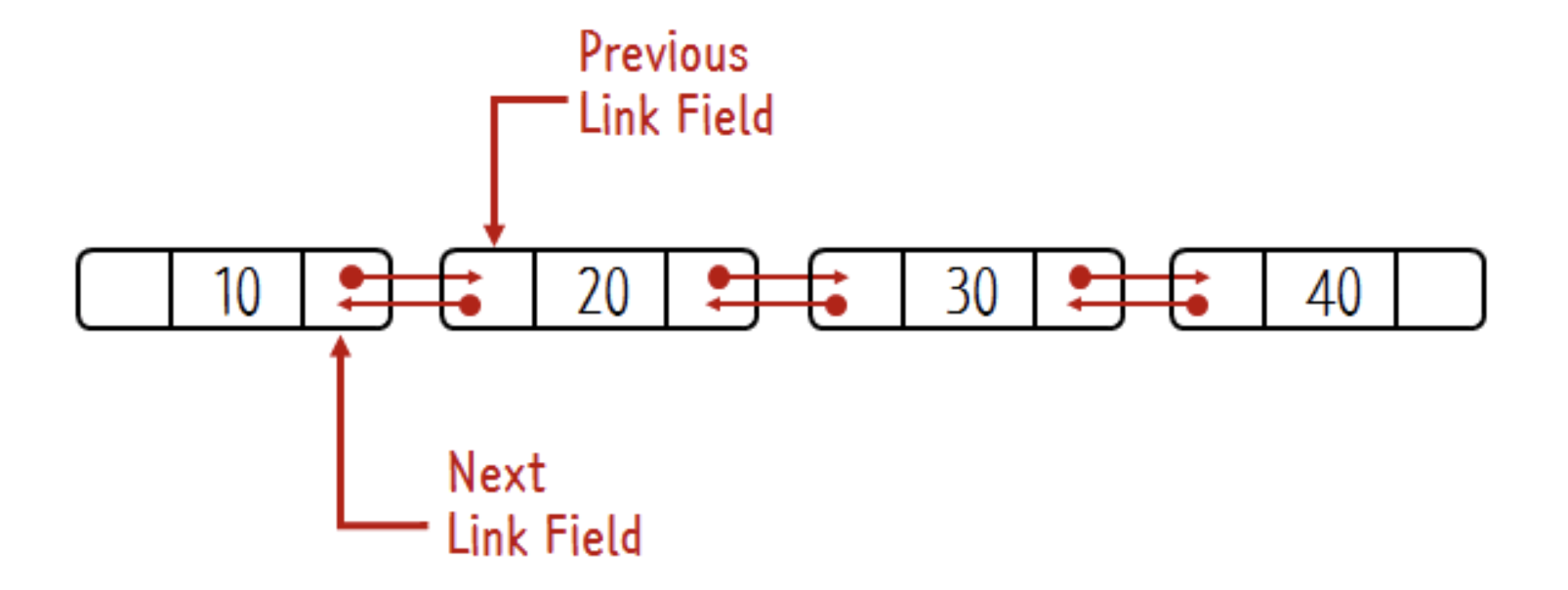DoublyLinkedList
Diagram

- SinglyLinkedList와 비슷하지만 단방향이 아닌 양방향으로 참조하는 자료구조
- 양쪽 끝 노드들은 Null을 가리키고 있다.
Operation
- push(value)
- 맨 끝에 node 추가
- pop()
- 맨 끝 node 제거
- unshift(value)
- 맨 앞에 node 추가
- shift()
- 맨 앞 node 제거
- get(index)
- index에 위치한 노드 조회
- set(index, value)
- index에 위치한 node의 value를 변경
- insert(index, value)
- index 위치에 node를 삽입
- remove(index)
- index에 위치한 node 제거
Purpose
- 데이터의 추가/삽입 및 삭제가 용이
- 검색의 경우 처음 요소부터 탐색을 해야하므로 검색 속도가 느림
- 검색을 자주 하면 배열이 유리
- 추가/삭제가 많으면 연결 리스트가 유리
검색을 하기 위해선 처음 혹은 끝에서부터 검색을 해야 하기 때문에 O(n)
추가/ 삭제는 해당 index에 위치한 node 혹은 해당 node 양 옆에 위치한 node의 포인터만 변경을 해주면 된다. 하지만 결국 검색(get)을 통해 추가/삭제하므로 O(n). 다만 양 쪽 끝 index에 추가/삭제 시 O(1)
Implement
class Node {
constructor(value) {
this.value = value;
this.next = null;
this.prev = null;
}
}
class DoublyLinkedList {
constructor(value) {
const newNode = new Node(value);
this.head = newNode;
this.tail = newNode;
this.length = 1;
}
push(value) {
const newNode = new Node(value);
if (!this.head) {
this.head = newNode;
this.tail = newNode;
} else {
this.tail.next = newNode;
newNode.prev = this.tail;
this.tail = newNode;
}
this.length++;
return this;
}
pop() {
if (!this.head) return undefined;
let temp = this.tail;
if (this.length === 1) {
this.head = null;
this.tail = null;
} else {
this.tail = this.tail.prev;
this.tail.next = null;
temp.prev = null;
}
this.length--;
return temp;
}
unshift(value) {
const newNode = new Node(value);
if (!this.head) {
this.head = newNode;
this.tail = newNode;
} else {
newNode.next = this.head;
this.head.prev = newNode;
this.head = newNode;
}
this.length++;
return this;
}
shift() {
if (!this.head) return undefined;
let temp = this.head;
if (this.length === 1) {
this.head = null;
this.tail = null;
} else {
this.head = this.head.next;
this.head.prev = null;
temp.next = null;
}
this.length--;
return temp;
}
get(index) {
if (index < 0 || index >= this.length) return undefined;
let temp = this.head;
if (index < this.length / 2) {
for (let i = 0; i < index; i++) {
temp = temp.next;
}
} else {
temp = this.tail;
for (let i = this.length - 1; i > index; i--) {
temp = temp.prev;
}
}
return temp;
}
set(index, value) {
let temp = this.get(index);
if (temp) {
temp.value = value;
return true;
}
return false;
}
insert(index, value) {
if (index === 0) return this.unshift(value);
if (index === this.length) return this.push(value);
if (index < 0 || index > this.length) return false;
const newNode = new Node(value);
const before = this.get(index - 1);
const after = before.next;
before.next = newNode;
newNode.prev = before;
newNode.next = after;
after.prev = newNode;
this.length++;
return true;
}
remove(index) {
if (index === 0) return this.shift();
if (index === this.length - 1) return this.pop();
if (index < 0 || index >= this.length) return undefined;
const temp = this.get(index);
temp.prev.next = temp.next;
temp.next.prev = temp.prev;
temp.next = null;
temp.prev = null;
return temp;
}
}
const myDoublyLinkedList = new DoublyLinkedList(1);
myDoublyLinkedList.push(2);
console.log(myDoublyLinkedList);
